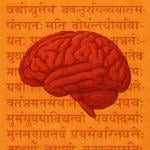The Thanksgiving passed of recently in the US… Here are a few pieces from the blog “Counterpunch” – which give a historical perspective to it… and after this its kind of hard to actually call it “Thanksgiving” anymore!
One vehicle for taming history is various patriotic holidays, with Thanksgiving at the heart of U.S. myth-building. From an early age, we Americans hear a story about the hearty Pilgrims, whose search for freedom took them from England to Massachusetts. There, aided by the friendly Wampanoag Indians, they survived in a new and harsh environment, leading to a harvest feast in 1621 following the Pilgrims first winter.
Some aspects of the conventional story are true enough. But it’s also true that by 1637 Massachusetts Gov. John Winthrop was proclaiming a thanksgiving for the successful massacre of hundreds of Pequot Indian men, women and children, part of the long and bloody process of opening up additional land to the English invaders. The pattern would repeat itself across the continent until between 95 and 99 percent of American Indians had been exterminated and the rest were left to assimilate into white society or die off on reservations, out of the view of polite society.
This one is about the mindset of Columbus and the men who were sick of mind and greedy of heart….
How Columbus’s Army took Arawak and Taino people prisoners and insisted that they take him to the source of their gold, which they used in tiny ornaments in their ears. And how, with utter contempt and cruelty, Columbus took many more Indians prisoners and put them aboard the Nina and the Pinta — the Santa Maria having run aground on the island of Hispañola (today, the Dominican Republic and Haiti). When some refused to be taken prisoner, they were run through with swords and bled to death. Then the Nina and the Pinta set sail for the Azores and Spain. During the long voyage, many of the Indian prisoners died. Here’s part of Columbus’s report to Queen Isabella and King Ferdinand of Spain:
“The Indians are so naive and so free with their possessions that no one who has not witnessed them would believe it. When you ask for something they have, they never say no. To the contrary, they offer to share with anyone.” Columbus concluded his report by asking for a little help from the King and Queen, and in return he would bring them “as much gold as they need, and as many slaves as they ask.”
Columbus returned to the New World — “new” for Europeans, that is — with 17 ships and more than 1,200 men. Their aim was clear: Slaves, and gold. They went from island to island in the Caribbean, taking Indians as captives. But word spread ahead of them. By the time they got to Fort Navidad on Haiti, the Taino had risen up and killed all the sailors left behind on the last voyage, after they had roamed the island in gangs raping women and taking children and women as slaves. Columbus later wrote: “Let us in the name of the Holy Trinity go on sending all the slaves that can be sold.” The Indians began fighting back, but were no match for the Spaniard conquerors, even though they greatly outnumbered them. In eight years, Columbus’s men murdered more than 100,000 Indians on Haiti alone. Overall, dying as slaves in the mines, or directly murdered, or from diseases brought to the Caribbean by the Spaniards, over 3 million Indian people were murdered between 1494 and 1508.














